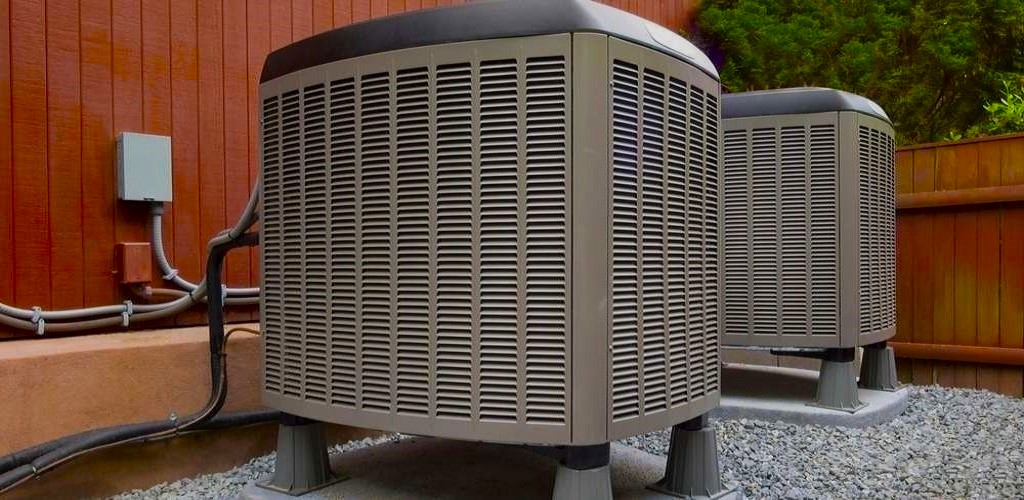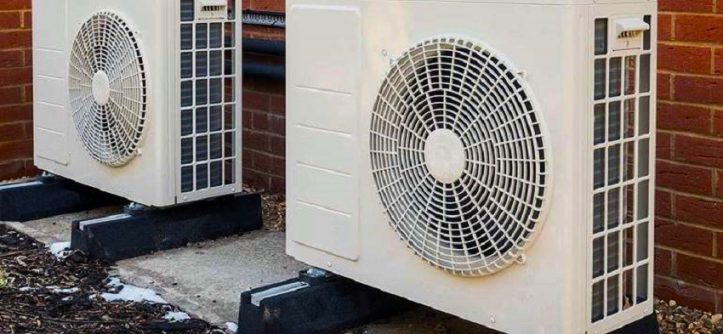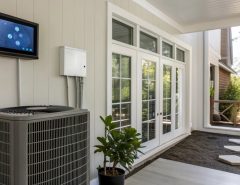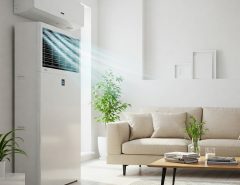Are you tired of shivering through frosty winters while your energy bills skyrocket? It’s time to turn your attention to the game-changer in home heating – the cold climate heat pump. In the relentless battle against bone-chilling temperatures, finding the perfect companion for your home is paramount. But fear not, for we’re here to unravel the mysteries and complexities of selecting the best cold climate heat pump.
Say goodbye to inefficient heating solutions and embrace the future of home comfort. In this article, we’ll dive deep into the world of cold weather heat pumps, exploring key factors, groundbreaking technologies, and expert tips to ensure you make an informed decision. Don’t let the cold conquer your castle any longer – let’s embark on this journey to discover the pinnacle of winter warmth.
What’s a Cold Climate Heat Pump Anyway?

Let’s start at the beginning, shall we? A cold climate heat pump, often referred to as a “cold weather heat pump” or “cold climate mini-split,” is a heating and cooling system that’s designed to work efficiently in colder temperatures. Unlike traditional heating systems that burn fuel to generate heat, heat pumps extract heat from the air or ground and distribute it into your home. Think of it as a reverse refrigerator – it takes heat from one place and moves it to another.
These nifty devices are incredibly energy-efficient and can provide both heating and cooling, making them a versatile solution for year-round comfort. But here’s the kicker: not all heat pumps are created equal, and not all of them can handle the brutal winters of a cold climate. So, let’s find out how to pick the cream of the crop.
Why Cold Climate Heat Pumps Are a Game-Changer
Before we delve into the nitty-gritty of selecting the best cold climate heat pump, let’s talk about why they’re such a game-changer, especially in regions where winter means business.
- Energy Efficiency: Cold climate heat pumps are incredibly energy-efficient. They can produce up to three times more heating energy than the electricity they consume, which means lower utility bills and a smaller carbon footprint.
- Year-Round Comfort: These units are not one-trick ponies. They provide both heating and cooling, making them perfect for all seasons. Say goodbye to the hassle of installing separate heating and cooling systems.
- Quiet Operation: Many cold climate heat pumps operate quietly, so you won’t have to endure the constant drone of a traditional furnace or air conditioner.
- No Fossil Fuels: Unlike oil or gas furnaces, cold climate heat pumps don’t rely on fossil fuels. This means you won’t be affected by fluctuating fuel prices, and you’ll reduce your dependence on non-renewable resources.
Now that you’re convinced that a cold climate heat pump is the way to go, let’s get down to business and explore how to find the best one for your home.
What Size Heat Pump Do I Need for a Cold Climate
The size of heat pump you need for a cold climate will depend on several factors, including:
- The square footage of your home
- The number of bedrooms and bathrooms
- The insulation level of your home
- The climate in your area
- The type of heat pump you choose
Here is a long chart of the recommended heat pump sizes for different home sizes and climate zones:
| Home size (sq. ft.) | Climate zone | Heat pump size (tons) |
| 1,000 | 1 (warm) | 2 |
| 1,000 | 2 (moderate) | 2.5 |
| 1,000 | 3 (cold) | 3 |
| 1,500 | 1 (warm) | 2.5 |
| 1,500 | 2 (moderate) | 3 |
| 1,500 | 3 (cold) | 3.5 |
| 2,000 | 1 (warm) | 3 |
| 2,000 | 2 (moderate) | 3.5 |
| 2,000 | 3 (cold) | 4 |
| 2,500 | 1 (warm) | 3.5 |
| 2,500 | 2 (moderate) | 4 |
| 2,500 | 3 (cold) | 4.5 |
| 3,000 | 1 (warm) | 4 |
| 3,000 | 2 (moderate) | 4.5 |
| 3,000 | 3 (cold) | 5 |
Factors to Consider When Choosing a Cold Climate Heat Pump

- Heating Capacity: The first thing you’ll want to check is the heating capacity of the heat pump. This is measured in BTUs (British Thermal Units) and tells you how much heat the unit can produce. Make sure it can handle the coldest temperatures in your area.
- Energy Efficiency: Look for a heat pump with a high HSPF (Heating Seasonal Performance Factor) rating. The higher the HSPF, the more efficient the unit is at converting electricity into heat.
- Cold Weather Performance: Not all heat pumps are created equal when it comes to cold weather performance. Some are designed to work efficiently in sub-zero temperatures, while others may struggle. Check the manufacturer’s specifications to ensure it can handle your climate.
- Size and Capacity: The size of the heat pump should match the heating and cooling needs of your home. A unit that’s too small won’t provide adequate comfort, while one that’s too large will cycle on and off frequently, wasting energy.
- Brand Reputation: Research the brand and read customer reviews. A reputable brand with a track record of reliability is a good indicator of a quality product.
- Warranty: Ensure that the heat pump comes with a solid warranty. This will give you peace of mind knowing that you’re protected in case of any malfunctions.
- Installation and Maintenance: Consider the ease of installation and maintenance. Some units may require more complex installation processes, and it’s essential to factor in these costs.
- Price: Of course, your budget plays a significant role in your decision. While it’s tempting to go for the cheapest option, remember that a higher upfront cost might pay off in energy savings over time.
- Compatibility: If you’re replacing an existing heating or cooling system, ensure that the heat pump is compatible with your current setup. This can save you time and money on installation.
Cold Climate Heat Pump Cost
The cost of a cold climate heat pump varies depending on the size and type of system, the brand, the complexity of the installation, and the location of the home. However, in general, cold climate heat pumps are more expensive than traditional heating and cooling systems.
Here is a chart of the estimated cost of cold climate heat pumps in 2023:
| Heat pump type | Size (tons) | Cost (including installation) |
| Central air-source heat pump | 2 | $5,000-$7,000 |
| Central air-source heat pump | 3 | $6,000-$8,000 |
| Central air-source heat pump | 4 | $7,000-$9,000 |
| Ductless mini-split heat pump | 1 (per zone) | $1,500-$3,500 |
| Ductless mini-split heat pump | 2 (per zone) | $3,000-$7,000 |
| Ductless mini-split heat pump | 3 (per zone) | $4,500-$10,500 |
| Geothermal heat pump | 2 | $15,000-$20,000 |
| Geothermal heat pump | 3 | $20,000-$25,000 |
| Geothermal heat pump | 4 | $25,000-$30,000 |
Is It Suitable for Cold Climates?
Now, you might be wondering, “Can a heat pump handle the brutal winters in my area?” It’s a valid concern, especially if you live in a region with extreme cold. Here’s the lowdown:
Cold climate heat pumps are designed to operate efficiently in temperatures as low as -15°F (-26°C) or even lower, depending on the model. They achieve this through a combination of advanced technology, including:
- Inverter Technology: This allows the heat pump to modulate its capacity to match your heating needs, even in cold weather, without constantly turning on and off.
- Cold Climate Mode: Many modern cold climate heat pumps have a specialized mode that enhances performance in frigid temperatures by optimizing defrost cycles and heating capacity.
- High-Quality Insulation: These units are well-insulated to prevent heat loss and maintain efficiency in cold conditions.
However, it’s essential to choose the right model for your specific climate. If you live in an area with particularly harsh winters, consult with a professional HVAC technician who can recommend the most suitable unit for your needs.
Conclusion
In your quest for the best cold climate heat pump, you’ve embarked on a journey toward unparalleled comfort and energy efficiency. As winter’s icy grip tightens, your cold weather heat pump becomes your ally in the battle against freezing temperatures.
The array of cold climate heat pumps on the market can be overwhelming, but fear not, for you’ve delved into the depths of knowledge to emerge victorious. Your desire for warmth, savings, and sustainability will be met by selecting the ideal cold climate heat pump.
Now, it’s time to take action. Assess your unique needs, from insulation to climate conditions, and consult with experts to pinpoint the best heat pumps for cold climates. The path to comfort and savings beckons—seize it with confidence!
FAQs
-
Can I use a regular heat pump in a cold climate?
While regular heat pumps are suitable for milder climates, they may not perform efficiently in extremely cold temperatures. It’s best to opt for a cold climate heat pump specifically designed to handle the rigors of winter in colder regions.
-
Are cold climate heat pumps expensive to operate?
Cold climate heat pumps are generally more energy-efficient than traditional heating systems, which can lead to lower operating costs. However, the exact cost savings depend on factors like your climate, the heat pump’s efficiency, and electricity rates in your area.
-
How long do cold climate heat pumps typically last?
A well-maintained cold climate heat pump can last anywhere from 15 to 20 years or even longer. Regular maintenance and timely repairs can extend its lifespan.
-
Do I need a backup heating system with a cold climate heat pump?
In extremely cold climates, it’s advisable to have a backup heating source, such as electric resistance heating or a furnace. This ensures that you’ll have reliable heating even during severe cold snaps when the heat pump’s efficiency may decrease.
-
Are there government incentives for installing a cold climate heat pump?
Many governments offer incentives and rebates to encourage the installation of energy-efficient heating and cooling systems, including cold climate heat pumps. Check with your local energy authority or government website to see if you qualify for any incentives or tax credits.
Tags: best cold climate heat pumps, best heat pumps for cold climates, cold climate heat pump challenge, cold climate heat pump cost, cold climate heat pumps, cold weather heat pump



